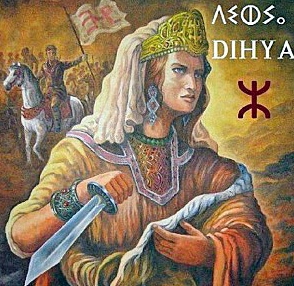 Judeo-Berber tribes as indigenous of African Judaism (first part).
Judeo-Berber tribes as indigenous of African Judaism (first part).
A. African Jews.
We must be careful not to consider African Jews as forming a single bloc, an ethnic or linguistic entity homogeneous. Those of North Africa come from two distinct origins. If some came from Europe, the others are an Aboriginal group. Those from Europe are almost always original Spanish to the north of Algeria and Morocco, those of Italian origin to Tunis and some other points on the coast Tunisian. These speak a European idiom, and trace their origins back to Spain or Italy; they do not differ not substantially from their co-religionists in the European Mediterranean. As for the groups of indigenous Jews, they are subdivided in turn into:
1 ° Judeo-Arabs, Jews and Arabs of morals and form the totality of the population
urban centers of large barbarian centers far from the coast. This is the case of the Jews of Marrakech, southern Morocco, those of most Algerian and Tunisian cities, and partly also of Tripolitan Jews. Several times, these Judeo-Arabs were mixed with elements from Asia or Europe. Nevertheless, as indicated by their type, their names, their customs, their customs and their traditions, the primitive nucleus of the Judeo-Arabs was constituted by
Native Jews. Some of them who at one point, as is the case for Tunis, for Marrakech and for Tlemcen, Constantine have received important European colonies, and have kept their African character, thanks to the Judeo-Berber thrust from within.
Thus, in Tunis, more than half of these Jews wear (bore) ethnic names of tribes or Berber cities of the interior In Tripoli, the proportion of names of Berber or Saharan origin was even more pronounced.
2°. This observation applies especially to the Judeo-Berber groups. The latter are in turn divided into nomads, sedentary and troglodytes. They have all the attributes of an Aboriginal people who, although reduced in number and importance, have left
traces of his passage and the survivals of his influence in all areas of life, in religion,
in morals, linguistics and geographical names. These survivals are found even among some Berber tribes whose folklore, the habits and customs betray an old
Jewish influence.
B. The Judaeo-Berbers.
The Judeo-Berbers embrace the following Jewish groups, which survive today: Almost all the Jews of Tripolitania, among which we must particularly mention the groups of Msellata and Derna, the two troglodyte cities of Jebel Gharian, and the three villages of Iffren which form the eastern slope of Jebel Nefoussa. In the rest of the latter, the Jews have disappeared; but their memory is still alive everywhere. In addition, the Jews of Djerba, the groups of southern Tunisia, the Jewish nomads of Djerid, Drid, Sers and the region of Constantine belong to the same origin. Moreover, Morocco has still preserved, besides the nomads, Judéo-Berbers attached to the soil and speak the “Ghleuh”, Berber dialect of the Atlas. It is precisely this last African Jewish group that attracts our full attention. One of the distinguishing features of Judeo-Berbers is their faith in their direct Palestinian origin. These Jews continue, along with Procopius, with Ibn Khaldun and the Hebrew authors of antiquity and the Middle Ages, to consider the Berbers as a people also from Palestine. Those of Ghadames, for example, are considered to be Philistines who emigrated to Africa after the death of Djalout dit Goliat. The Berbers of Mzab and Nefoussa would be the direct descendants of the Ammonites and Moabites, while the Masmudas would be the Amalekites of the Bible; so much that a folklore would have redone a “great Palestine” in the Tell and the ksourwhere Israel would find itself surrounded by its former rivals. The traditions of the Jews are as haunted by biblical memories; The presence of inscriptions relating the exploits of Joab, Solomon and Ezra on African soil is everywhere indicated. However, the most accredited opinion among them is that the Jews of the interior would have come in large numbers brought as prisoners of war, then sent as settlers by Titus to Africa. This tradition does not seem to be belied, since we can establish a filiation that links the Judéo-Berbers to the Roman era; later, survivals and various documents only confirm it. We are at a time when rabbinic Judaism was not yet dominant. It would be expected to find in these natives of Africa traces of cults that are known to us, either by historians or by archaeological discoveries of the first centuries of Christianity. The prototype of what was to be primitive African Judaism is in the following aspects:
1. The existence of temples, excluding synagogues, such as we find at Elephantine in the fifth century BC. J. – C., in Egypt, that of Onias and the temples of the Phalachas of our days.
2. The traditions of the clans of the Aaronides, or priests who were to practice the worship of sacrifices, worship of which the Synagogue occurs since the abolition of the rites of the sacrifices and the replacement of the Cohen or sacrificer by the rabbi.
3. The permanence, at least for the first centuries of the establishment of these Jews, of necropolis carved out of the rock which form the type of classical Jewish tombs.
4. Linguistic or ritual survivals relating either to Palestine or at least to Hellenized Cyrenaica. On all these points, my researches made on the spot did not stop to give more or less convincing results; so that we can now affirm that wherever Ibn-Khaldoun places Judeo-Berbers, the traces of their passage and even the survivals of their stay can be demonstrated with certainty.
